- News
- Reviews
- Bikes
- Accessories
- Accessories - misc
- Computer mounts
- Bags
- Bar ends
- Bike bags & cases
- Bottle cages
- Bottles
- Cameras
- Car racks
- Child seats
- Computers
- Glasses
- GPS units
- Helmets
- Lights - front
- Lights - rear
- Lights - sets
- Locks
- Mirrors
- Mudguards
- Racks
- Pumps & CO2 inflators
- Puncture kits
- Reflectives
- Smart watches
- Stands and racks
- Trailers
- Clothing
- Components
- Bar tape & grips
- Bottom brackets
- Brake & gear cables
- Brake & STI levers
- Brake pads & spares
- Brakes
- Cassettes & freewheels
- Chains
- Chainsets & chainrings
- Derailleurs - front
- Derailleurs - rear
- Forks
- Gear levers & shifters
- Groupsets
- Handlebars & extensions
- Headsets
- Hubs
- Inner tubes
- Pedals
- Quick releases & skewers
- Saddles
- Seatposts
- Stems
- Wheels
- Tyres
- Health, fitness and nutrition
- Tools and workshop
- Miscellaneous
- Cross country mountain bikes
- Tubeless valves
- Buyers Guides
- Features
- Forum
- Recommends
- Podcast
review
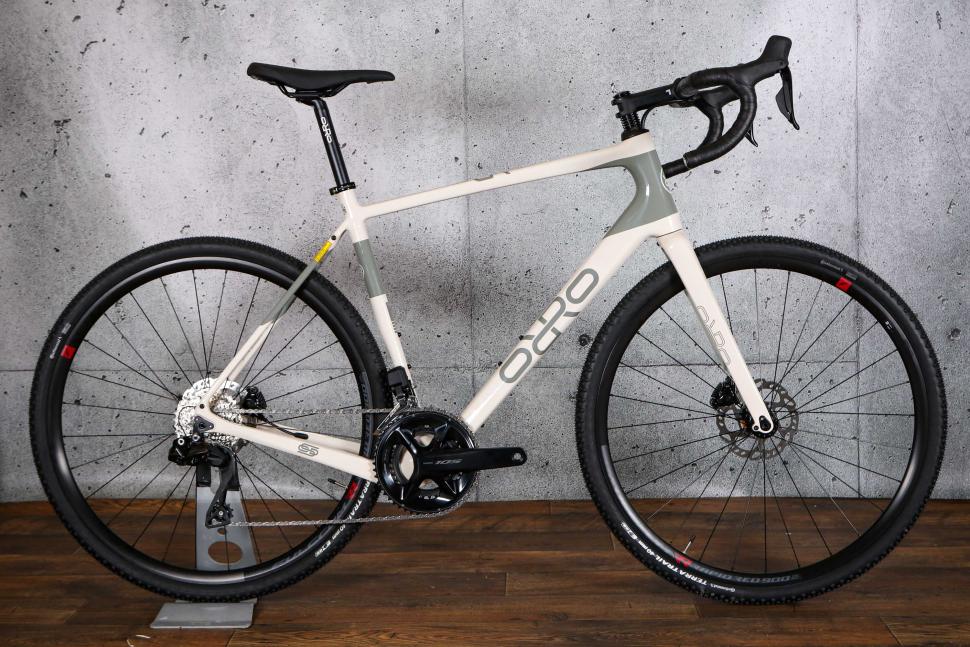 2022 Orro Terra C Shimano 105 Di2.jpg
2022 Orro Terra C Shimano 105 Di2.jpg£2,999.99
VERDICT:
Quick and versatile gravel bike that's good value in this electronic build
Great value
Fast and fun to ride
Versatile
Limited mounts for luggage
Wheels and tyres are heavy
Overgeared for the steep off-road stuff
Weight:
9,640g
Contact:
At road.cc every product is thoroughly tested for as long as it takes to get a proper insight into how well it works. Our reviewers are experienced cyclists that we trust to be objective. While we strive to ensure that opinions expressed are backed up by facts, reviews are by their nature an informed opinion, not a definitive verdict. We don't intentionally try to break anything (except locks) but we do try to look for weak points in any design. The overall score is not just an average of the other scores: it reflects both a product's function and value – with value determined by how a product compares with items of similar spec, quality, and price.
What the road.cc scores meanGood scores are more common than bad, because fortunately good products are more common than bad.
- Exceptional
- Excellent
- Very Good
- Good
- Quite good
- Average
- Not so good
- Poor
- Bad
- Appalling
Orro's Terra C is a really accomplished gravel bike that's very capable both on the tarmac and off it, making it one of the best gravel bikes for UK gravel riding which often includes long road sections to link up the trails.
This build with the new Shimano 105 Di2 groupset is more or less perfect if you're splitting your time between the roads and the tracks, but if you're looking for a bike you can load up for longer adventures it's probably not the one for you. You can't have everything.
This is a bike we have previously reviewed on road.cc – the Terra C Adventure in 2020, and the Terra C GRX800 in 2021. As with the 2021 model, this frame features fully internal cable routing through the head tube, which makes for much cleaner lines and also means a fully internal cable run through the handlebars is possible, making it much easier to fit bar bags.
The frame uses the same carbon technology as before. It is built from Sigmatex carbon and it has Innegra inserts in crucial areas to guard against rock strikes and other trail damage. Innegra is a high modulus polypropylene fibre that improves the level of impact resistance. It's a mix of high and low modulus carbon, so the emphasis is on strength and ride quality rather than weight, although it's certainly not a heavy bike – this large build comes in at well under 10kg even with reasonably heavy wheels and a mid-range groupset.
The ride
Let's first talk about how this bike rides out on the roads and the trails. It's a very easy bike to get on with. I've done some big days on the Terra C on a wide variety of terrain and it's just a great bike to be aboard when you're mixing up your riding.
The riding position with the 71-degree head tube isn't too relaxed and on tarmac the bike feels quite purposeful. The stack height at the front of this large test bike is 612mm. On top of that the bike is running about 30mm of spacers. This gives a pretty comfortable position, but in the drops it's still quite aerodynamic.
In reality, I could probably ride either the large or the extra large frame. This large gives me a shorter reach and more drop to the handlebar which I prefer for the mix of road and off-road riding I've been doing. If I was looking for a bike to spend more time on on the road I would probably size up and get the rangier extra large.
> Bike geometry 101: Find out why stack & reach are important
The Terra C is very much at home on the road and on the trails. There's no judder from the carbon fork and the bike is very well behaved under braking. The seatstays aren't dropped, which is sometimes a way that bike manufacturers make the rear of a gravel bike more compliant, but with a fairly long exposed seatpost the rear end of the bike is well matched with the front.
It's not necessarily a bike that majors on damping technologies, but it does a really good job of filtering out trail buzz and also feels very planted when descending. Certainly, the front end is stiff enough that it's the tyres rather than the frame and fork that feel vague at speed, especially when running off-road pressures on the tarmac.
The Orro Terra C uses a press-fit bottom bracket which allows for a very wide shell and plenty of stiffness when transferring power to the pedals. It is a very efficient bike, and there is absolutely no sideways flex even when you're pushing hard up a steep off-road climb. That said, press fit is not my bottom bracket of choice for a bike like this which is designed to get dirty. I would rather see Orro adopt the newer threaded T47 standard for future versions. That also allows for a wide and stiff bottom bracket but is easier to service and less prone to creaking. Then again, I've not had any problems with the review bike.
Groupset
Our bike came with Shimano's new 105 Di2 groupset. There has been a lot of talk on road.cc about the pros and cons of switching to 12-speed and semi-wireless electronic shifting in Shimano's mid-range groupset. But there are no questions about the performance here – 105 Di2 is functionally indistinguishable from Shimano's higher end groupsets. Almost everything that you would want to trickle down from the top-end gear has made it to this level, and as a result it's a brilliant groupset to use. Shifting has been flawless throughout even under heavy load.
The braking from the new levers and callipers is also fantastic. The rotors took a little longer than normal to bed in, but now that they have the braking performance of this bike is as good as you could ever need. There's 10 per cent more pad clearance at the rotor and this means that dust and water that gets into the calliper makes less noise during your ride.
I found that the levers had a little bit more throw before they got to the bite point, but I actually preferred this over the feel of my mechanical 105 hydraulic levers. The position of the shifting buttons is more or less unchanged, with two long paddles behind each brake lever. With the first lever textured and raised slightly against the second, there is a little bit more delineation between the two than there has been in previous Di2 setups I've used.
However, I still find that the shifting positions of the Shimano buttons are the least intuitive of the three main electronic groupsets, and I still struggle to feel the difference of the buttons when I'm wearing gloves.
Because the function of the buttons is configurable using Bluetooth, you can set up your levers to work in different ways. I tend to set them up as a paddle shift, a bit like the SRAM setup, with the right lever shifting out and the left lever shifting in.
Gearing-wise, 105 Di2 is designed as a road groupset, and here you get a 50/34 chainset up front and an 11-34 cassette at the back. That's a good spread of gears, with a 1:1 bottom ratio, but if you're spending a lot of time off road then you'll probably find, like I did, that you'd be glad of a couple of lower gears at the expense of the top end.
The ideal setup would probably be a sub-compact chainset, something like a 46/30, but that's not currently an option with the 12-speed 105.
Wheels and tyres
Let's move on to the wheels. Bikes at this kind of price point often save money on the wheels and the tyres. And this is the case here, although I found the wheel and tyre setup to be very effective during testing.
The Fulcrum Rapid Red 900 wheels certainly aren't light, but they have proved to be strong and easy to set up tubeless.
The 40mm Continental Terra Trail tyres have a good all-purpose tread pattern and a decent sized air chamber for a bit of off-road comfort. They are a wire bead tyre so they're heavy, and I find that at lower pressures wire bead tyres tend to burp air more easily than folding beads when hitting larger rocks as the bead isn't as flexible.
Even so, they're easily good enough to keep on the bike until they wear down, when you can fit something lighter and more supple. The Terra C will take up to a 44mm tyre, which isn't huge these days but should be plenty for most mixed surface riding.
Versatility and value
It's a bike that'll definitely benefit from a wheel and tyre upgrade in time, and it's also a bike that you could keep two wheelsets in the shed for – it's light enough and purposeful enough to be a quick endurance road bike if you throw a set of slicks on it.
There are mudguard mounts front and rear, so you can press it into service as a winter road bike and then throw some bigger tyres on for those dusty summer gravel rides. It's a very versatile machine.
If you're specifically looking for a bikepacking bike then this probably isn't it. There are rear rack mounts, but limited to a 5kg load, and there are no mounting points on the fork for carrying stuff at the front. It's not like you can't load it up – you could still get a decent amount of luggage on board with, say, a Tailfin rear bag, a full-length frame bag and a bar roll, but your options are just a bit more limited compared with other bikes in the market.
If bikepacking is a lesser concern then this bike really does have a lot going for it. It's fun to ride, it's comfortable, it's reasonably light and it's very well priced. Three grand isn't chump change, but if you're looking for a carbon gravel bike with an electronic groupset then there aren't that many in the same ballpark.
Ribble's CGR SL comes in a similar build for the same money, and we'll be reviewing that bike soon, but most of your other options are significantly more. Cannondale's Topstone Carbon comes in a SRAM Rival AXS build but it's nearly five grand, for example, and a Rival AXS build of the Specialized Diverge is £6,500. Both of those are great bikes, and feature some interesting damping tech, but the Orro looks like a bit of a steal by comparison.
Conclusion
Overall, it's easy to like the Terra C, and I've very much enjoyed riding it. I'll be sad to see the back of it. Not everything's perfect, but it's a brilliant bike for the money, and if what you want is something that's fast and capable over a wide range of surfaces then this frame with this build is hard to beat. Save up for some nicer wheels and tyres, and stick some slicks on the old hoops for winter road duties, and you've got a bike that'll be first out of the shed nearly every time.
Verdict
Quick and versatile gravel bike that's good value in this electronic build
road.cc test report
Make and model: Orro Terra C 105 Di2
Size tested: Large, 58cm
About the bike
List the components used to build up the bike.
Handlebar: Deda Zero 1
Stem: Deda Zero 1
Seatpost: ORRO Alloy Setback
Rotor: Shimano SM-RT70 140mm
Frame: ORRO Terra C
Fork: ORRO Terra C
Saddle: Orro Bostal Saddle
Chain: Shimano M6100 12 Speed
Wheelset: Fulcrum Rapid Red 900 DB
Tyres: Continental Terra Trail 40c
Front Derailleur: Shimano 105 7150
Brake Calipers: Shimano 105 7170 Hydraulic
Rear Derailleur: Shimano 105 7150 12 Speed
Shifters: Shimano 105 7170 Hydraulic
Cassette: Shimano 105 R7100 11-34
Chainset: Shimano 105 7170 50-34
Tell us what the bike is for and who it's aimed at. What do the manufacturers say about it? How does that compare to your own feelings about the bike?
From Orro:
Terra C is characterised by its light responsive ride quality, built with the specifications necessary to provide capable control across varied terrain. An adaptive bike crafted to ensure that your next adventure, new route, or old commute is a total blast.
The frame geometry is poised to descend and corner with ease inspiring confident off-road handling. Take it back to the tarmac and the excellent power transfer provided by the carbon layup is immediately apparent. Innegra fibres are woven into the carbon at strategic locations to protect the frame from impact damage; this ensures the 'light and fast' design ethos is met with the durability riders expect. The maximum weight limit for the frame bosses is 5kg.
Where does this model sit in the range? Tell us briefly about the cheaper options and the more expensive options
Third most expensive in a seven-bike range from £2,299 to £3,899.
Frame and fork
Overall rating for frame and fork
9/10
Tell us about the build quality and finish of the frame and fork?
Looks nicely made, finish is tidy and hardwearing.
Tell us about the materials used in the frame and fork?
Sigmatex Hi- and Lo-modulus carbon, Innegra inserts for protection.
Tell us about the geometry of the frame and fork?
Size L
397mm Reach
612mm Stack
71° Head tube
73.3° Seat tube
1052mm Wheelbase
How was the bike in terms of height and reach? How did it compare to other bikes of the same stated size?
I could ride the L or the XL fine; the L felt good and it's a purposeful position.
Riding the bike
Was the bike comfortable to ride? Tell us how you felt about the ride quality.
Good ride quality. Reasonably firm but that's offset by the bigger tyres. No specific suspension components here so relying on the carbon layup.
Did the bike feel stiff in the right places? Did any part of the bike feel too stiff or too flexible?
No, it's well judged. Balance front to rear is good.
How did the bike transfer power? Did it feel efficient?
Lots of stiffness in the power transfer areas, efficiency feels good.
Was there any toe-clip overlap with the front wheel? If so was it a problem?
It wasn't a problem for me.
How would you describe the steering? Was it lively neutral or unresponsive? Fairly neutral.
Tell us some more about the handling. How did the bike feel overall? Did it do particular things well or badly?
A 71-degree head angle isn't especially shallow, so this is at the faster-feeling end of the gravel bike spectrum, but it's still pretty relaxed compared to a road bike.
Which components had the most effect (good or bad) on the bike's comfort? would you recommend any changes?
Could do with thicker bar tape, and more supple tyres.
Which components had the most effect (good or bad) on the bike's stiffness? would you recommend any changes?
No issues.
Which components had the most effect (good or bad) on the bike's efficiency? would you recommend any changes?
Lighter wheels and tyres would make the bike feel a lot more sprightly.
Rate the bike for efficiency of power transfer:
9/10
Rate the bike for acceleration:
7/10
Rate the bike for sprinting:
5/10
Rate the bike for high speed stability:
8/10
Rate the bike for cruising speed stability:
10/10
Rate the bike for low speed stability:
9/10
Rate the bike for flat cornering:
8/10
Rate the bike for cornering on descents:
8/10
Rate the bike for climbing:
7/10
The drivetrain
Rate the drivetrain for performance:
10/10
Rate the drivetrain for durability:
8/10
Rate the drivetrain for weight:
7/10
Rate the drivetrain for value:
6/10
Tell us some more about the drivetrain. Anything you particularly did or didn't like? Any components which didn't work well together?
Shimano's 105 Di2 is a great way to get into electronic shifting without breaking the bank. It's still quite spendy, though.
Wheels and tyres
Rate the wheels for performance:
7/10
Rate the wheels for durability:
9/10
Rate the wheels for weight:
5/10
Rate the wheels for comfort:
7/10
Rate the wheels for value:
7/10
Tell us some more about the wheels.Did they work well in the conditions you encountered? Would you change the wheels? If so what for?
Fairly basic wheels, but you can set them up tubeless and you can upgrade when you're ready. I've seen plenty worse.
Rate the tyres for performance:
7/10
Rate the tyres for durability:
7/10
Rate the tyres for weight:
4/10
Rate the tyres for comfort:
6/10
Rate the tyres for value:
6/10
Tell us some more about the tyres. Did they work well in the conditions you encountered? Would you change the tyres? If so what for?
Tyres are ordinary but dependable. Grip levels are decent. Wire bead means they're heavy.
Controls
Rate the controls for performance:
8/10
Rate the controls for durability:
8/10
Rate the controls for weight:
7/10
Rate the controls for comfort:
7/10
Rate the controls for value:
7/10
Tell us some more about the controls. Any particularly good or bad components? How would the controls work for larger or smaller riders?
Fairly standard alloy stuff but no issues during testing. Thicker bar tape would improve feel off road.
Your summary
Did you enjoy riding the bike? Yes
Would you consider buying the bike? Yes
Would you recommend the bike to a friend? Yes
How does the price compare to that of similar bikes in the market, including ones recently tested on road.cc?
£2,999 for a carbon gravel bike with electronic shifting is about as cheap as things get right now. The Ribble CGR SL is £2,999 with a Shimano 105 Di2 build and the Lauf Seigla another £300 more in a SRAM Rival AXS build. Plenty of other brands are a lot more.
Rate the bike overall for performance:
9/10
Rate the bike overall for value:
7/10
Use this box to explain your overall score
A really good value gravel bike that'll also serve as a winter workhorse if you want. Not the best out there for carrying things but a great overall package, and this build is probably the pick if you don't want super-low gears.
About the tester
Age: 50
I usually ride: whatever I'm testing... My best bike is: Kinesis Tripster ATR, Merida Scultura, Dward Design fixed
I've been riding for: Over 20 years I ride: Every day I would class myself as: Expert
I regularly do the following types of riding: road racing, commuting, touring, club rides, general fitness riding, fixed/singlespeed, Mountain Bike Bog Snorkelling, track
Dave is a founding father of road.cc, having previously worked on Cycling Plus and What Mountain Bike magazines back in the day. He also writes about e-bikes for our sister publication ebiketips. He's won three mountain bike bog snorkelling World Championships, and races at the back of the third cats.
Latest Comments
- mikewood 2 hours 15 min ago
Surely actually hitting another road user PROVES their driving was dangerous! There's no opinion involved...
- ktache 2 hours 21 min ago
I realised some time back, that if I was running a bit late at work and needed to get a wriggle on to catch the train, that I make up most time on...
- eburtthebike 2 hours 26 min ago
Obviously they'd watched the Panorama travesty.
- Mr Anderson 2 hours 30 min ago
Two more years Geraint?
- Rendel Harris 2 hours 59 min ago
In fact the last three Tours have started, respectively, in Copenhagen, Bilbao and Florence so the tradition of alternate years seems to have been...
- PenLaw 3 hours 21 min ago
Where were you on the morning of the 18th January?
- LookAhead 3 hours 24 min ago
The point is that mudguards take up space (between the chainstays, under the fork crown, etc.) that the tires can no longer occupy, so the max...
- tony.westclassics@live.co.uk 3 hours 59 min ago
Has anyone tried to cancell there Discovery+ sub, they try every trick in the book to keep your money, I tried, got to pass word and another page...
- tony.westclassics@live.co.uk 4 hours 10 min ago
What ideot invented this, you have to buy pedels AND she,s, SO my Sidi,s are no good for them, they sit down and think of more ways of get peoples...








































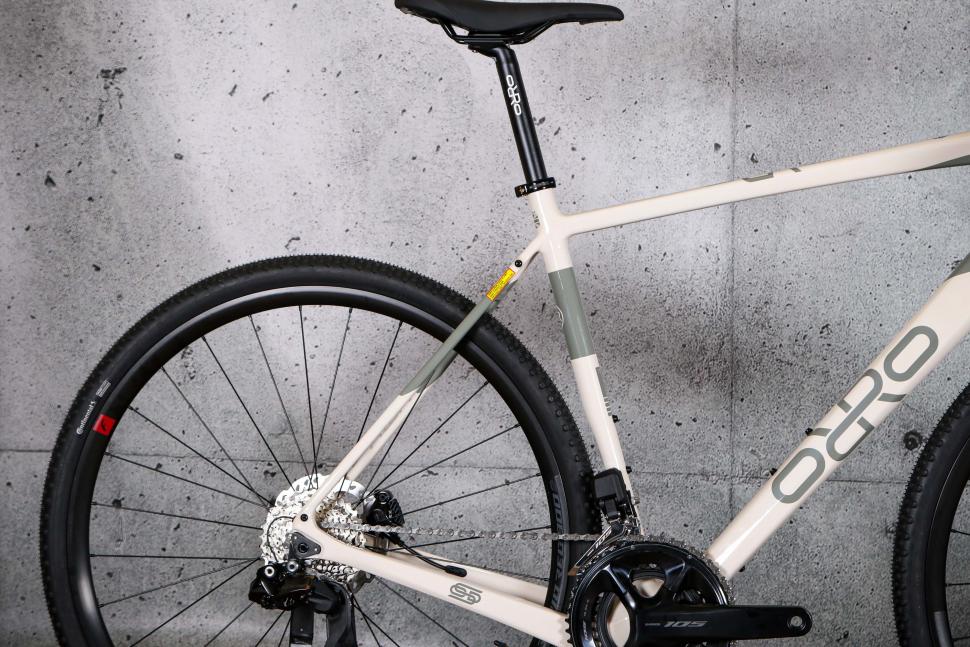
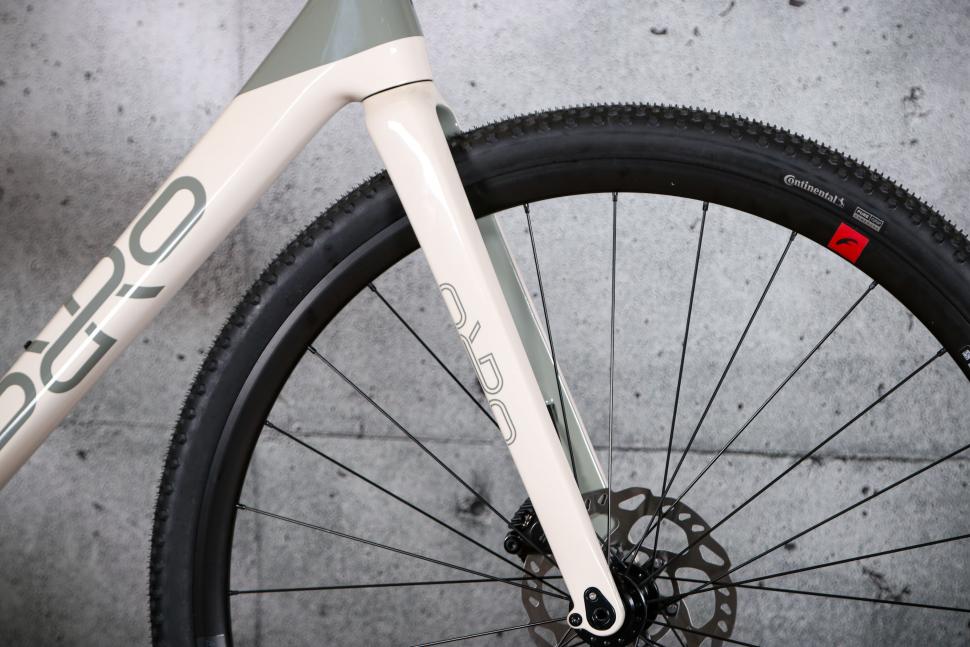
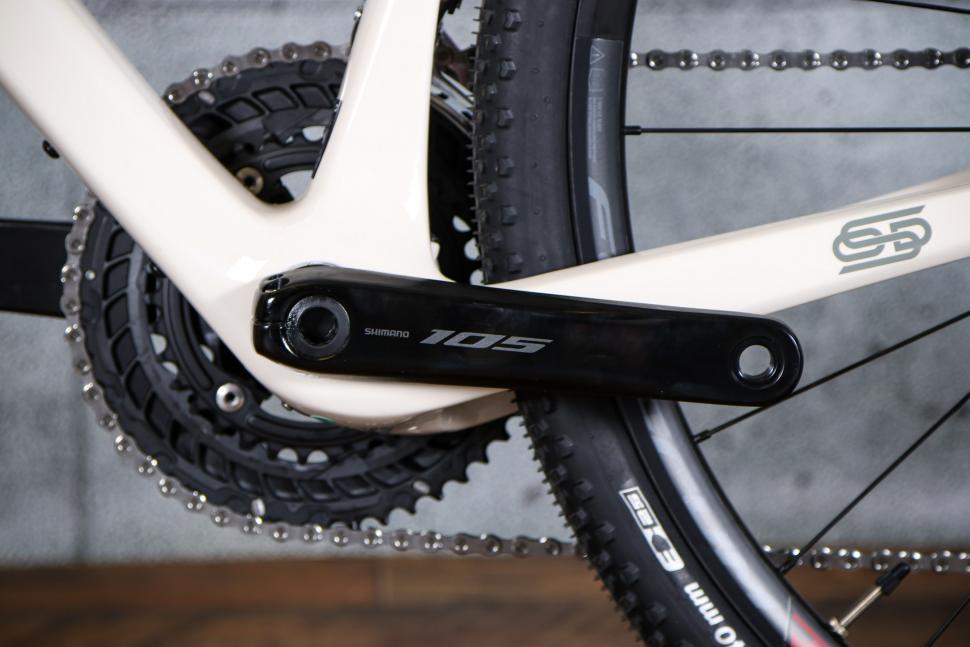


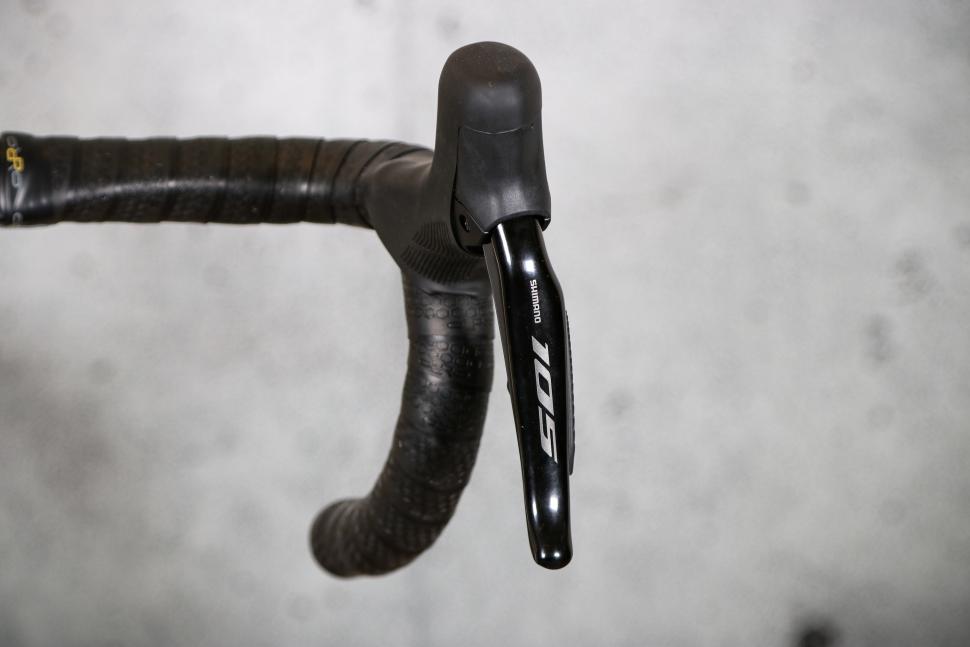
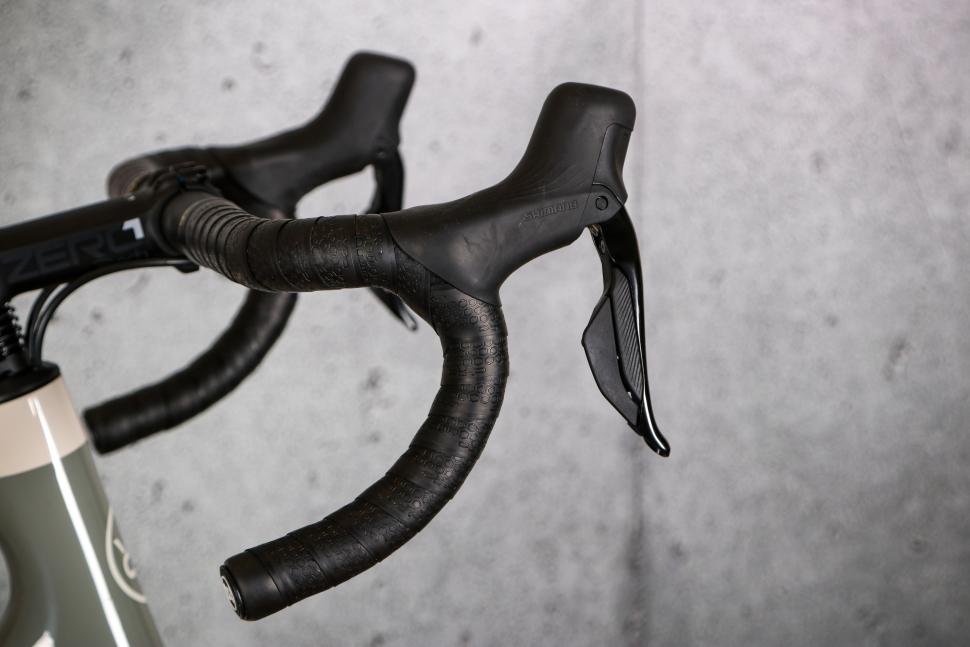
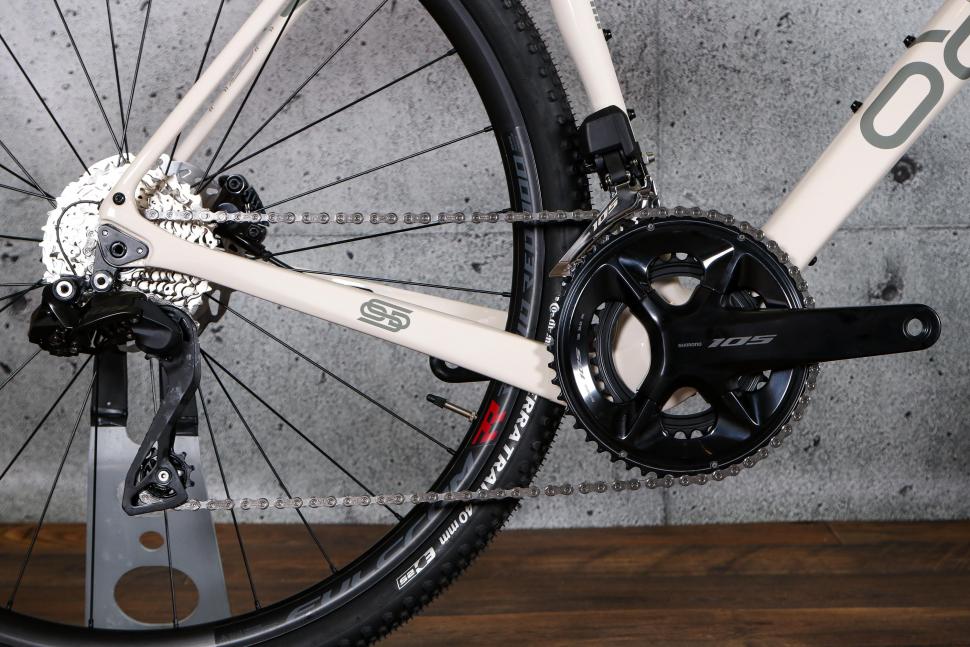
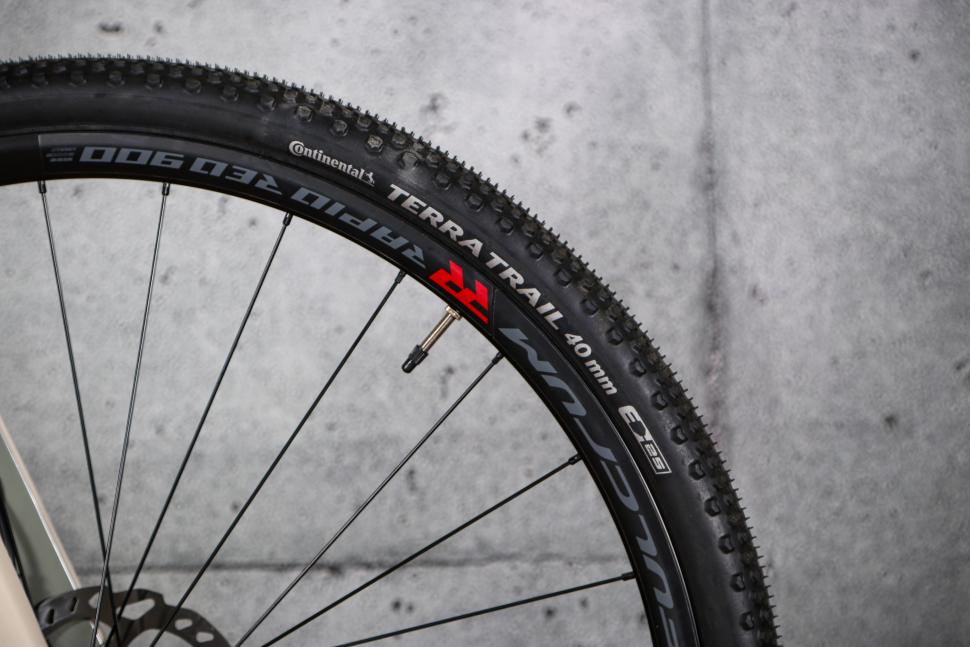

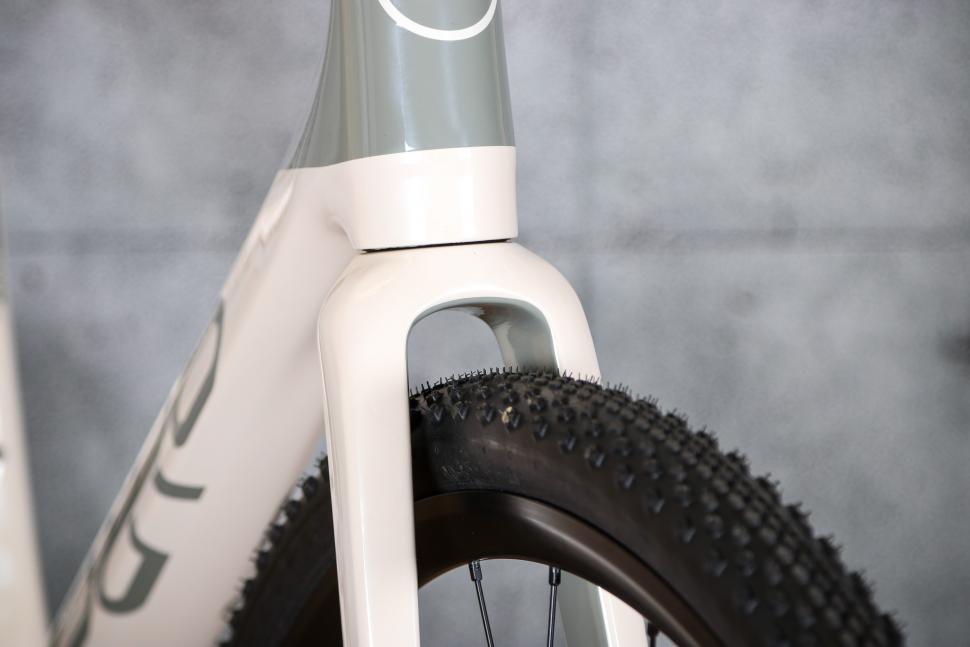

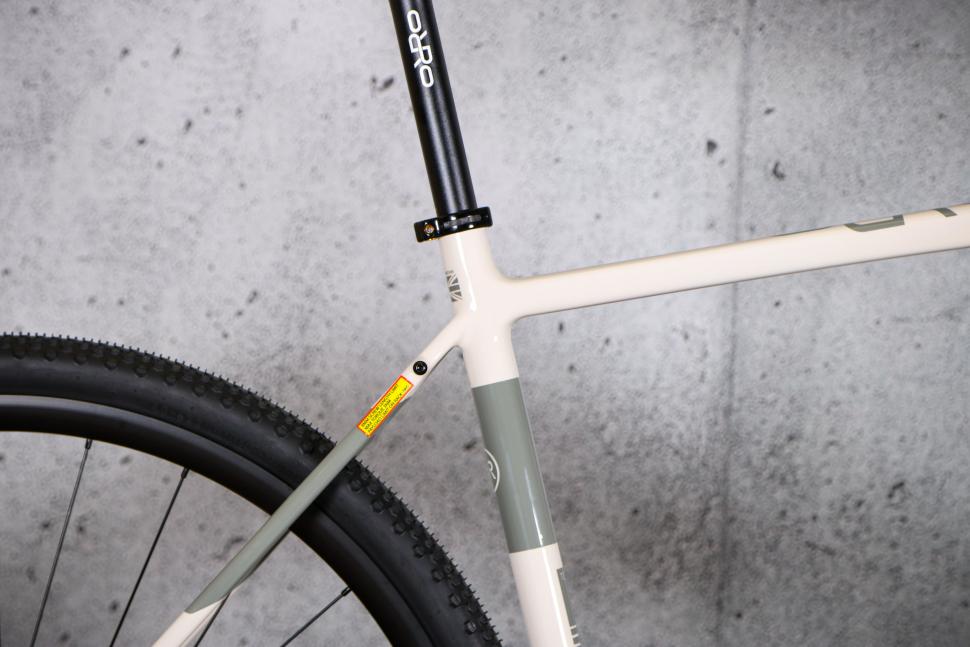

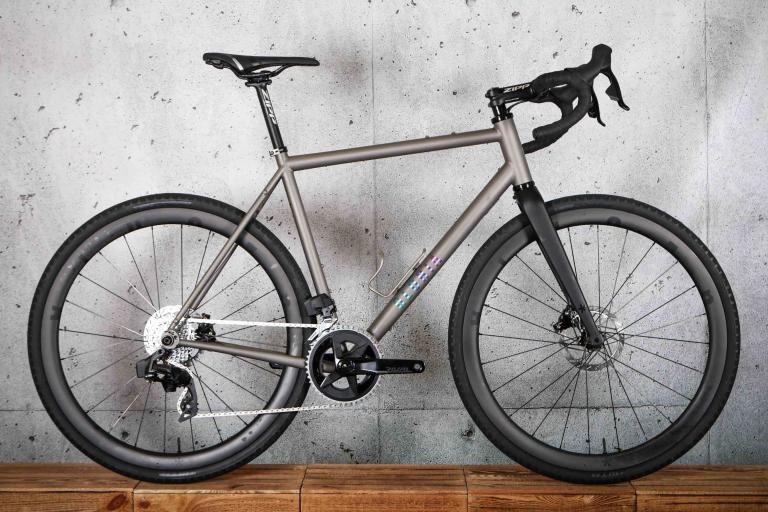
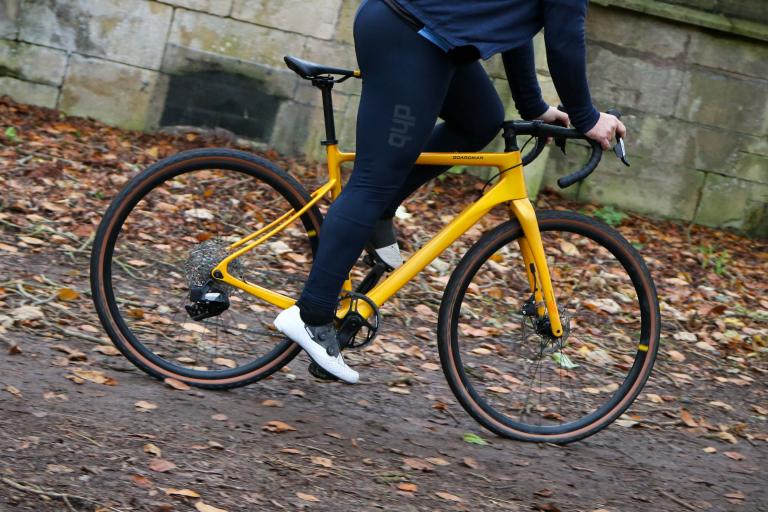
Add new comment
17 comments
Hey, I currently have a boardman cx team 55.5, you probably know and I'm wondering about the size of ORRO Terra. The tables show me M, 510 but I'm afraid it will be too small. What do you think? I am 182 cm and 86 cm legs.
and I'm wondering about the size of ORRO Terra. The tables show me M, 510 but I'm afraid it will be too small. What do you think? I am 182 cm and 86 cm legs.
Dave, this bike seems great value for money. With narrower tyres would it be a decent alternative to a Giant Defy 0(the one with SRAM axs) which is out of stock everywhere? Unless you have inside knowledge of a Defy 105Di2 coming soon for similar money.
yeah, it's definitely an alternative. slacker at the front but still a very good ride on the tarmac. stick a set of 30mm tyres on and it'd be a great all-rounder
Thanks Dave, appreciate the reply. Looks like some big price increases yesterday from Giant.
The worry is that the logo and branding is designed to look the same upside-down - are they expecting trouble?
No, it's so the branding doesn't have to be changed for Australian exports.
I have the 105 mechanical version from last year and absolutely love the bike. I use it purely a road bike and think it's a comfortable ride, looks great with the semi integrated cables and fantastic value for money.
I have what was originally the 105 version of the Terra C from 2021 (I have made quite a few changes to the factory spec- 46/30 chainset, 11-42 cassette, which took swapping to a mtb rear mech and a shiftmate, and flared drop handlebars). It is an absolutely cracking bike for bikepacking (and mine is the extra small). It also makes a good winter road bike as well.
Cracking frame and bike. I have the non-Di2 version from a couple of years ago. Do a lot of endurance road riding on it as well gravel & MTB orienteering (completed London Edinburgh London on it in the summer)
Glad to see Orro are supplying a long cage derailleur now (assuming up-to-date 105 still has different cage lengths), they didnt used to. Weird they don't match it up with a 36t cassette.
One bugbear I have with the frame - that weird rear mudguard mount with the mount facing the tyre. Good luck finding mudguards that fit happily with that without getting all Heath Robinson on how you mount it.
The Genesis Datum has a similar rear mudguard mount on the seatstay bridge and I've actually found it works really well. It took me a little while extra to trial fit, mark and then drill the hole, but once fitted they are completely solid. With the slide on brake bridge attachments there has always been a bit of wobble (and therefore potential rattle). This was with SKS Chromoplastics.
IIRC, the only slight faff was needing to get some flanged button head torx screws of the right length (a few £ on eBay) to give maximum tyre clearance. I thought the extra faff was worth it for the result but YMMV!
TBH, not sure I'd considered mounting directly to the mudguard without a bridge bracket. It's a good idea. Might give a bit too much clearance for smaller road tyres.
It's easy to adjust with spacers, these came with the SKS mudguards. The only problem I've found is having tried different size tyres and spacing accordingly the hole needs to be in a slightly different place and has become a slot.
I had forgotten the issue I did have... I bought the bike second hand from someone who hadn't fitted mudguards and the bolt on the seatstay bridge had seized up so badly it unseated the threaded mount from the carbon fibre when it was removed. My LBS had to epoxy a new one into the hole.
If you aren't running mudguards - make sure you apply liberal amounts of grease to the bolt and periodically check it's still moving!
Given that the new 105 can also come with a 11-36 cassette, surely it would have been a no brainer to spec that on this gravel bike instead of the 11-34?
Also did you ever notice the lack of a clutch on the rear mech on the rough stuff?
105 12 speed is an odd spec imo. Only good for gravel "lite".
Undergeared for proper off road hills. Might be ok for a Gravel racer but not as versatile as I'd want.
the 11-36 probably wasn't available OEM when this bike was specced, i think. agree it would be an improvement.
i did notice the lack of clutch on rougher stuff in terms of chain movement and the odd bit of chain slap but it wasn't really a problem. long term i'd probably add some protection to the chainstay just in case